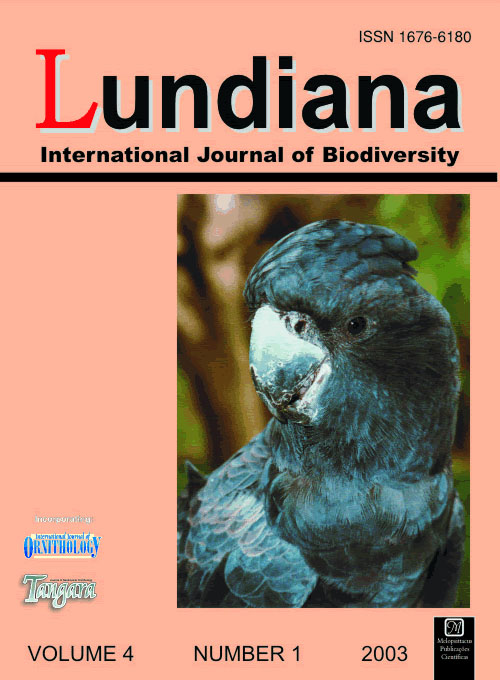Semelhança com o cenário e evolução de cores cripticas de alguns Passeriformes em florestas decíduas
DOI:
https://doi.org/10.35699/2675-5327.2003.21835Palavras-chave:
Plumage colour, background colour, crypsis, Great Tit Parus major, Blue Tit Parus caeruleus, Marsh Tit Parus palustris, Nuthatch Sitta europaea, Treecreeper Certhia familiarisResumo
Most drab plumage colours are probably cryptic. Crypsis (camouflage) occurs when the colour of a significant part of the plumage is similar to the colour of a significant part of the background against which the prey bird may be detected by a potential predator. In this study we compare back colours of tits and associated species with colour backgrounds in their habitat during a four-month period in winter. We test the hypothesis that in some of the species back colour is similar to one of the background colours. In addition to colour backgrounds, microhabitats and tree species were also recorded. Great Tit Parus major, Nuthatch Sitta europea and Treecreeper Certhia familiaris showed distinct preferences for different colour backgrounds, reflecting their choice of microhabitats and tree species. The data suggest that in the Great Tit the olive-moss green back colour has evolved as crypsis for foraging close to the base of tree trunks, where most of the moss is found. The bluish-grey back colour of the Nuthatch is suggested to have evolved as crypsis against greyish beech trunks and branches. Similarly the brown back colour of the Treecreeper is suggested to have evolved as crypsis against pale brown- greyish brown bark surfaces. The possibility that the grey back colour of the Marsh Tit Parus palustris has evolved as crypsis against greyish branches is discussed. For the Blue Tit Parus caeruleus it is suggested that the green back colour has evolved as crypsis against leaves during summer; thus no background matching of the back occurs in winter. For the black back colour of the Longtailed Tit Aegithalos caudatos no background matching can be suggested. The study demonstrates that it is possible to quantify background colours for fouraging birds in the wild as seen by a human observer on the ground. It is proposed that these observations are also representative for a hunting Sparrowhawk Accipiter nisus, even though differences in observing height and possible differences in spectral visual range may present difficulties.
Downloads
Publicado
Edição
Seção
Licença

Este trabalho está licenciado sob uma licença Creative Commons Attribution-NonCommercial 4.0 International License.

